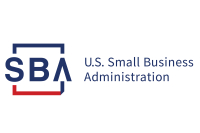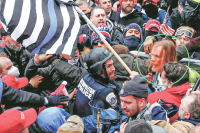Sales tax hike back on the Swain ballot

Swain County is once again trying to increase its sales tax rate a quarter of a cent with the intent of putting additional revenue toward school improvements, but the final decision will be left up to voters.
Swain County residents will see the sales tax referendum on their ballot Nov. 6. If approved, the county’s sales tax will increase from 6.75 percent to an even 7 percent, which would put it in line with other surrounding counties.
The same referendum appeared on the November ballot in 2016 but it was voted down by 58 percent of voters. Local leaders have said they think it failed because of a lack of community education regarding the issue, which is why the county commissioners and the school board decided to give it another try.
With more than $20 million needed for school capital projects and school safety improvements, Swain County Schools could really use the estimated $300,000 a year an additional quarter-cent sales tax could bring into county coffers.
Mark Sales, the new schools superintendent, has been using Facebook live videos to educate the community about the improvements the school system could make with the additional revenue.
With six candidates running for two open seats on the Swain County Board of Commissioners, all of them have expressed their support of the sales tax increase as long as it’s used for the purpose of improving the school infrastructure.
Related Items
“I’m supportive of the quarter-cent sales tax under this condition — that it goes back to the schools,” said Republican Holly Bowick. “When I read it, the wording is very iffy and that’s why it died the last time because there was no explanation on the ballot. We need to guarantee that money is going to education and stick with it.”
Unfortunately, the referendum still doesn’t come with much explanation on this year’s ballot. It also appears at the very end of page two of the ballot, which is a concern for Democratic commissioner candidate John Parton.
“It’s the last thing on the ballot. People may not even get to it,” he said. “But I’m 100 percent for it. It’s something most people I’ve talked to are in favor of. We’re not going to be able to depend on the North Shore settlement money for all our issues.”
With four children in the school system, Republican commissioner candidate Kevin Seagle said he knows how badly the school system needs the additional revenue to get the school infrastructure to where it needs to be. Compared to increasing property taxes to pay for the capital needs, he said sales tax is paid by everyone using services in Swain, including all the tourists visiting the county. He would like to see more specific projects laid out so voters know exactly what they’ll get for the tax increase.
“I think it’s a great thing. I think it didn’t pass because no one knew what it was last time. You can’t vote for something you don’t know what it will be used for, but the school board is working on education,” Seagle said. “Maybe we need to narrow it down to exactly what the money will be used for.”
Democratic commissioner candidate Roger Parsons also said he was supportive of the increase to increase safety provisions.
“When our schools were built, they were designed as an inviting place with ground windows and doors — now it’s a different situation and we live in a different time,” he said. “A sales tax will be paid by everybody — not just Swain County citizens — we’ll receive a lot of help from the tourists so I’m in favor of it.”
Sale also recently announced that Swain County Schools will be a recipient of a $4.7 million critical needs capital construction grant from the state, which will go toward a high school renovation project that has been planned for several years.
“We’ll be able to add STEM classrooms at the high school and we’ll be able to change the current front entrance for students and the public and move it down to the bus area — this will improve safety measures with a buzz-in approach,” he said on one of his Facebook videos.”This is a tremendous step forward for Swain County Schools.”
The grant requires a local match of $1 for every $3 in grant funds from the county.









